Russian armored train. Part of 4
At the end of 1914, the construction of four armored trains for the Caucasian army began in the Tiflis workshops. Each of them consisted of a semi-armored steam locomotive, two four-axle armored cars and an armored wagon for ammunition. Among themselves, they had a number of differences in the type of booking. By order of the command, the armament of these armored trains was supposed to be able to be used in the field, so guns and machine guns were installed on conventional machines without any alterations.
In front of each armored car, one 76,2-mm mountain cannon of the 1904 model of the year was installed with a firing angle on the horizon 110 degrees. In addition, there were two Maxim machine guns (one per board), and if necessary, their number could be increased to six. To increase the firepower in the sides, embrasures were cut for rifle shooting. At the tender of the locomotive, an observant post of the head of the train was established.
The production of trains ended at the beginning of 1915, and they were divided into the following stations: No. 1 - Caret, No. 2 - Alexan Dropol, No. 3 - Nakhichevan and No. 4 - Tiflis. They were served by the 1-th Separate Caucasian Railway Brigade. Their main tasks, according to the developed "instructions to the chiefs of armored trains," were as follows:
"but). Protection of railways in areas prone to attacks by the enemy or hostile population.
b). For convoying trains on particularly dangerous areas.
at) . For the production near the enemy of small repair work on the railway.
d). To cover the working units that produce near the enemy significant work on the railway.
d). To participate in the combat operations of the troops on the orders of the nearest squad leader.
Armored trains are provided with armor only from the action of rifle and shrapnel bullets. Against the shock action of the artillery shells of the train, these are not protected. ”
The command of the Caucasian army tried to form permanent teams for their armored trains, but this required permission from the Headquarters. Therefore, Lieutenant General SV. Volsky (chief of the Caucasian Military District. - Approx. Of the author) on July 6 of the year 1915 sent the following telegram to the Headquarters:
“For the Caucasian army 4 armored trains were equipped, each armed with two mountain cannons arr. 1904 of the year, equipped with rotating recoilless installations, and four machine guns. If necessary, the number of machine guns can be increased to 12.
One of these trains must be kept on constant alert, for which it must be equipped with a special full-time team consisting of 3 chief officers and 82 lower ranks for one armored train developed and approved by the Commander-in-Chief. I ask your consent to submit the staff for approval by the Supreme Commander. "
Response from the general on duty with the Supreme Commander, Lieutenant General PK Kondzerovsky was received fairly quickly:
“Please submit [state] for approval. There are no principal objections if all the formations, both with regard to the materiel and the personnel, can be carried out by the means of the district. ”
However, later on, the head of the VOSO Directorate, Stavki Ronzhin, spoke out against the standing team on the armored trains of the Caucasian Army. 19 August 1915, he sent a note to General Kondzerovsky in which he wrote:
"Returning this correspondence on the accessories I inform you that I can not agree to the formation of a special team for the Caucasian armored trains, since the short-term service of armored trains can be carried by units of the special forces assigned for this purpose."
Data about the combat use of armored trains built in the Caucasus, the author could not be found. Subsequently, armored trains were used by the national armies of the Transcaucasus. In particular, the composition number 4 in 1918 was used by the Georgian army, and number 2 and number 3, respectively, Armenian and Azerbaijani.
Przemysl Trophy
When Przemysl was captured in the spring of 1915, Russian troops captured at least two Austrian armored trains. Moreover, no data on these compositions in Western sources dedicated to stories Armored trains of the Austro-Hungarian army, the author could not be found. According to the documents of the South-Western Front, one of the armored trains consisted of the following:
“Under the equipment of armored cars, two Austrian half-platforms, each 5,25 x 3 meters in size, were used. In this small square, one gun and three machine guns were installed. When we took Przemysl, we got the armored train, and was slightly corrected by the 6 railway battalion. ”
The armament had fairly limited firing angles: the gun in the first car could fire forward and go right, and in the second car, back and go left. Thus, the shelling of a target located at the side of the train simultaneously from two guns was impossible. In addition, the small size of the wagons and their unsuccessful booking greatly hampered the work of the calculations. The 80-mm М5 Austrian field guns on special thumbnail installations and Schwarzlose 8-mm Austrian machine guns were used as weapons. In addition to the two armored cars, the train included an Austrian armored locomotive.
However, the 6 railway battalion could not use an armored train in battles, a unit was transferred from Przemysl to another sector of the front. But already on May 10 of 1915, General Tikhmenev sent General Ronzhin the following telegram:
“I have already ordered, in view of the withdrawal of the 6 railway battalion from Przemysl, to transfer the armored train to the 2 Siberian Railway Battalion for the head detachments.”
Despite the rather primitive design, this structure acted very successfully in the first battles.
So, in the battle near the village of Kholupki under the Red, on the night of 11 on 12 June 1915, the commander of the armored train of the 2 Siberian railway battalion, the staff captain Nikolai Kandyrin, “boldly pushed him under disastrous artillery and rifle fire into the enemy’s rear” . Opening fire from all kinds weapons, the squad provided training for the infantry regiment’s attack “and, making fire with confusion in the enemy’s ranks, made it possible for the regiment to occupy enemy trenches almost without loss and capture 6 officers and about 600 lower ranks”.
The next day, the division commander, General Bulatov, reported:
"The offensive division in connection with the work of the armored train is going well, the train is brilliant."
In the autumn of 1915, an armored train was put in for repair. At the same time, in parallel with the correction of armored cars, a special armored cellar car for the transport of shells and cartridges was manufactured. In addition, an Austrian-made armored train was replaced by a Russian Ov series, booked in Odessa according to the design of armored trains of the 2 Zaamur railway brigade. The steam locomotive entered the armored train in spring 1916 of the year.
In the 1916 year, during the summer offensive of the South-Western Front, the armored train was part of the 9 Army. By this time, in connection with the introduction of the numbering of armored trains, he received the number 7. But due to the severe destruction of the railways by the retreating Austrians, his actions in the 1916 campaign of the year were not very active.
According to its design, the armored train of the 2 Siberian Gesture was the most unfortunate of the trains of the Southwestern Front. Therefore, his commanders have repeatedly raised questions about the modernization of the composition. For example, 8 of June 1917 of the year, its chief, Captain Zhaboklitsky, sent a report to the VOSO Directorate of the Southwestern Front “On the military and technical imperfection of armored cars of the armored train No. 7”, which reported the following:
"The main defects of armored cars are as follows:
1). Due to the small size, technical imperfections of cars and not rational device loopholes, the armored train No. 7 is extremely poorly equipped with machine guns, having only 6 of them, which is a disadvantage compared to other armored trains having 18-24 machine guns.
Being in a small room of the carriage of guns and machine guns, and not demarcated, extremely constrains the work during the battle, both gunners and machine gunners.
2). With a concussion with each gunfire, the machine guns are wedged, the cartridges fall out of the bands, which causes minute delays in the action of the machine guns.
3). When the gun is positioned along the axis of the car, the machine gun No. 3 cannot work at all due to its proximity to the trunk of the gun. If you move the machine gun number 3 to the front loophole, then in the car number 1 machine gun number 1 will not be able to shoot together with machine gun number 3 due to the small distance between them, and in the car number 1 right, and in the car number 2 left side will remain completely without machine guns.
4). With the position of the gun on the transverse axis of the car, the action of the machine gun № 2 is extremely difficult for the gunners to work with the gun. Thus, due to the technical imperfection of the cars and the non-rational device of the loopholes, the joint action of all six machine guns at the same time is extremely difficult.
5). When there is no special room for artillery shells, they are folded in the back of the car number 1 and the front car number 2, which makes it extremely difficult to work as artillery and machine guns.
6). The location of the guns provides the angle of fire only 110 hail. And both guns can not fire the same target.
7). The device of the loopholes is such that when the guns are positioned along the axis of the car, the combat range is reached 5 versts, and when placed across it, 2 versts.
8). The height of the cars is only in the middle part of 2,25 m, while the walls are 1, 25 m, which, with extremely small car sizes, is hampered by the team’s actions.
9). In the present position of the guns, the entire recoil force and all the powder gases, and the shaking of the air, are obtained inside the car, which has a detrimental effect on the health of the team, and in some people the eardrums are damaged.
All of these defects of the armored train number 7 from 1915 prompted the train chiefs to apply repeatedly to replace the cars with more advanced ones, but due to frequent changes in train heads and other reasons, these petitions have not yet been satisfied. ”
The issue of upgrading the armored train of the 2 Siberian Gesture was raised at the congress of the South-Western Front railway workers held in June 1917 and discussed in the section of armored trains. As a result, as a temporary measure, it was decided to transfer the armored train No. 7 to an “armored car from a broken train”, which was located in Kiev. It was the site of a typical armored train of the project 2 of the Zaamur railway brigade, killed on the front of October 1915 of the year. But they did not have time to fulfill this decision
In June 1917, the armored train No. 7 supported its units during the beginning of the offensive of the South-Western Front. 22 June 1917, the commander of an armored train captain Zhaboklitsky reported to the headquarters of the 7 railway brigade (it included the 2 th Siberian Zhelbat):
“According to the order received from Nashtakor 41, the armored train of the 2 Siberian Railway Battalion No. 7 was called up to the combat sector of the 74 division, and 17 of this month went to a combat position.
18 was [June] received an order to begin firing at the targets specified by the 74 division. The shelling began in 9.15, ended in 21.35. 620 shells were fired, and were fired upon by enemy artillery during shelling. 19-th train left, but due to the situation artillery did not participate. 20 was standing in position, and the 3 hours were shelling the targets as instructed by the 74 Starters. ”
However, as is known, the offensive failed because of the catastrophic fall of discipline in the Russian army, and the Germans launched a counterstrike on July 6 on July 1917. Russian units that lost their combat effectiveness began to roll back. Their withdrawal was covered by separate subunits that preserved their combat effectiveness, units of “death,” Cossacks, armored cars, and armored trains. Among the latter was the armored train number 7. This is what the commander of the 2 Siberian Gesture reported to the VOZ of the South-Western Front in a report from July 29 of the year 1917:
“I donate that according to the order of the Chief of Staff of the 41 Corps, the armored train No. 7 on the night of July 9 of this year. made with art. Sloboda on Art. Denisovo to clarify the situation in view of the onset of the enemy ...
By reconnaissance, it turned out that Art. Denisovo is already occupied by the enemy, and it was not possible to drive because of the damage to the exit arrows. Fire was opened at the armored train, and throughout 2's versts the train was subjected to heavy shelling. They responded from the train with machine-gun and cannon fire, and due to this the offensive of the enemy was somewhat delayed.
When advancing to art. Sloboda on the stretch, due to the movement of trains in batches, a crash happened, and drive to the station. Sloboda was impossible. Due to the onset of the enemy, the steam train of the armored train was damaged, the sights and locks from the guns, the backpieces and some other parts of the machine guns were removed.
About 3 hours 9 July armored train was abandoned, and the team on foot on the order retreated in the direction of Mikuliniec. "
The armored train went to the Germans, the author does not have information about its future fate.
Armored train of Ust-Dvinsk fortress
The construction of this armored train began in June 1915, by the forces of the 5 Siberian Railway Battalion arriving at the front near Riga. And initially this composition was intended to cover the repair work on the railway. So, in the report on the work of the 5 Siberian Gesture there is such a record:
“The 4 Company began the construction of a armored car for a working train. The working train includes: one armored car, two platforms with rails, three with sleepers, a car with bridge bars and four cars with a cobblestone, designed to be filled with ryazhey. ”
But soon a full-fledged armored train was erected, for the manufacture of which three three-axle metal gondola cars and a semi-armored Ov locomotive were used. The squad was included in the garrison of the Ust-Dvina fortress near Riga, where it operated until the summer of 1917.
In addition to being part of the armored train, the 1 and 5 th battalion mouth had one biaxial metal gondola with loopholes. These cars were used to cover the battalion workers parties engaged in the restoration of railways on the front line.
The composition and design of the armored train can be found in the report sent to the head of the military communications department of the Northern Front:
“The commission, chaired by the commander of the 5 Siberian Railway Battalion 28 in May 1917, examined the crust. The Old Kemmern Rigo-Orlovskaya Railroad is an armored train consisting of a locomotive, two carriages and one platform with a platform towering on it. In each of the armored cars there are three machine guns, and in one of the cars the loopholes for machine guns are made so low that shooting from them is possible lying down. On the platform of the platform is placed one 3-dm. a gun.
Reservations for railcars and platforms consist of an outer iron sheet - 4 mm, a wooden lining with a thickness of 4 inch and an inner iron sheet with a thickness of 5 mm, the latter is lined with boards of an inch thickness. The holes of the loopholes for rifle shooting are closed with iron sheets 5 thick mm. The bushings are protected by iron sheets, which cover slightly more than half the diameter of the wheels. The armor of a locomotive is arranged in the same way as in cars.
The platform of the platform, on which there is a gun, is approximately at the height level - a normal boxcar, has 4 beads and is perfectly open.
The train from a distance of 35 steps 10 shots from a rifle into the casing of the side walls of the car were made ...
The commission came to the conclusion that the side paneling of the car can be considered as reliably protecting against piercing bullets and shell fragments, as far as the roofs of the cars (crouched, covered with firewood), those should also be booked or made appropriate visors to close shrapnel and bullets. In addition, the sheets covering the axle boxes should be increased to the bottom in order to protect the carriage ramps if there are accidentally hit by fragments of projectiles.
Bearing in mind that the platform with the instrument is perfectly open, it is desirable to
A solid iron coating over it to protect the cannon’s servants from shrapnel bullets and shrapnel, and provide the shield with the cannon. Installing a gun on a field-type carriage is impractical; it is desirable to install a gun on a stand with a shelling of 360 degrees.
For machine guns that have only side shelling, it is necessary to cut through the corner loopholes with an angle of 90 degrees, which gives complete freedom of fire both during the attack and during withdrawal.
All the mentioned works, except for the reorganization of the gun, can be performed by the battalion by their own means.
As of 31 in March 1917, the team of the armored train (No. 1, s - Northern Front) included 50 people, of which 51-th Siberian rifle regiment - 37, Ust-Dvinsk fortress artillery - 6, 5 locomotive crew-ro-martial 7. railway battalion - 6. He was armed with 76,2 machine guns Maxim, 1914-mm anti-rifle gun model XNUMX, and the team rifle.
Attempts have been made repeatedly to improve the design of this composition, which, however, remained unsuccessful. For example, on May 4, a special commission examined the armored train of the 1917 Siberian Railway Battalion, and compiled a list of measures required to bring the train to a combat capable state. First of all, it was supposed to further protect the armor of the axle box of the wheels of a locomotive and tender, as well as the boiler of the locomotive from the front. Then replace the 5-mm armor on the 1,5-mm wagons, and also install an 10-sloped roof over the artillery car to protect the calculation from precipitation.
By the summer, it was possible to agree on all issues related to the modernization of the composition. 4 July 1917, the head of VOSO on the theater of operations sent a telegram to the headquarters of the Northern Front, in which he reported the following:
“Alteration of armored train No. 1с can be carried out in Riga in the precinct workshops by the 5 Siberian Railway Battalion. The repair time is 2 weeks, which is why the train can be removed from the line and sent for rework. ”
It is not known whether the armored train was sent for repair, but in August 1917, during the capture of Riga and Ust-Dvinsk, the train fell into the hands of the Germans. Perhaps he did not have a locomotive that was being repaired, but maybe it was simply left because of the impossibility of a departure. In the Russian archives, the author was unable to find details about the loss of this armored train. It is also unknown to the author whether the Germans or Latvians used this composition.
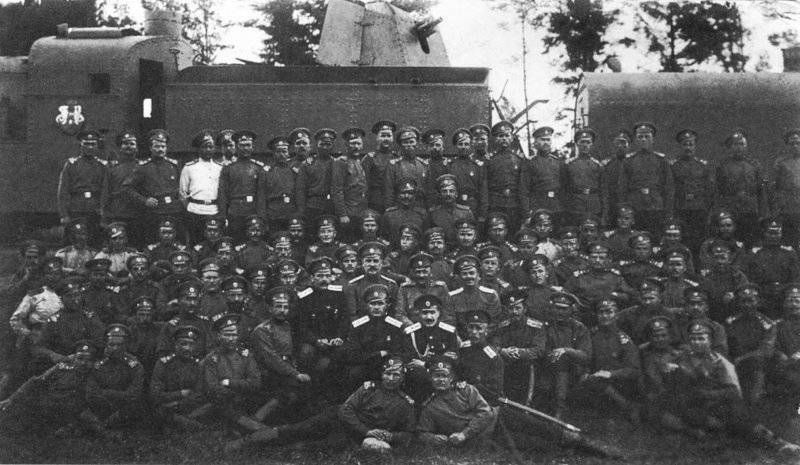
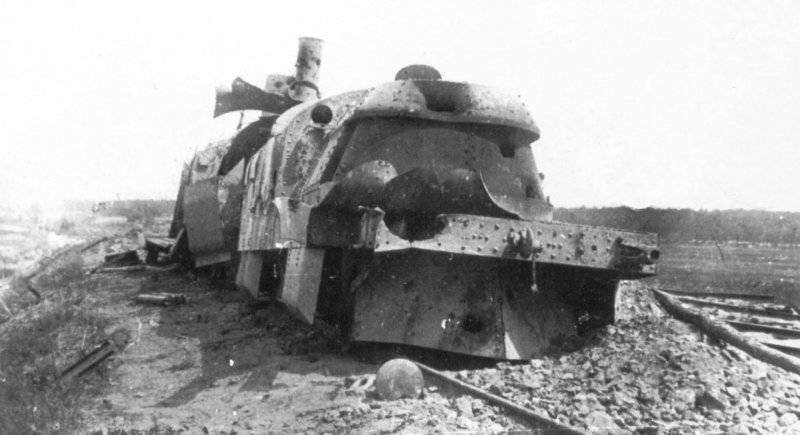
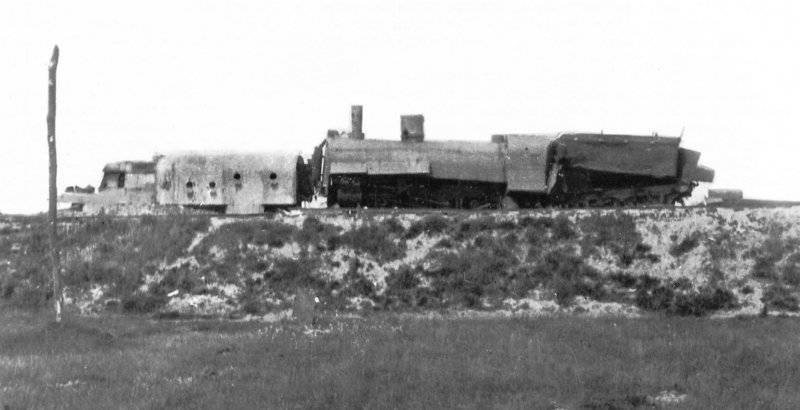
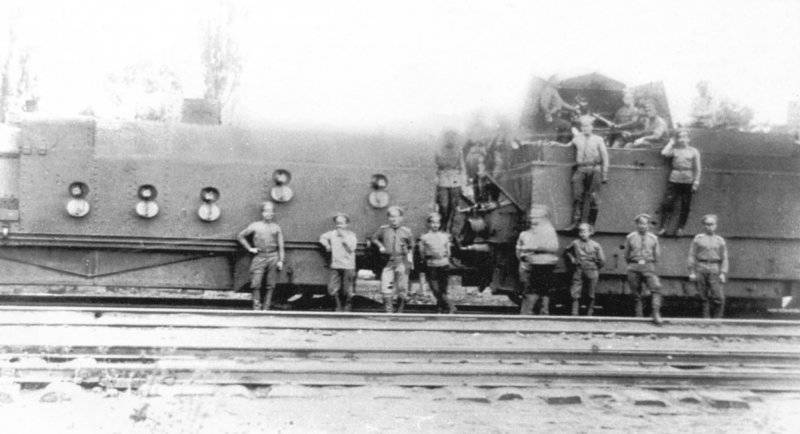
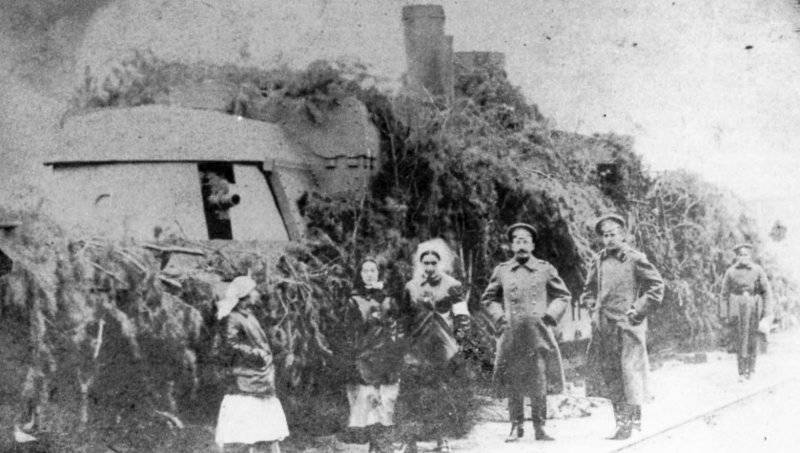
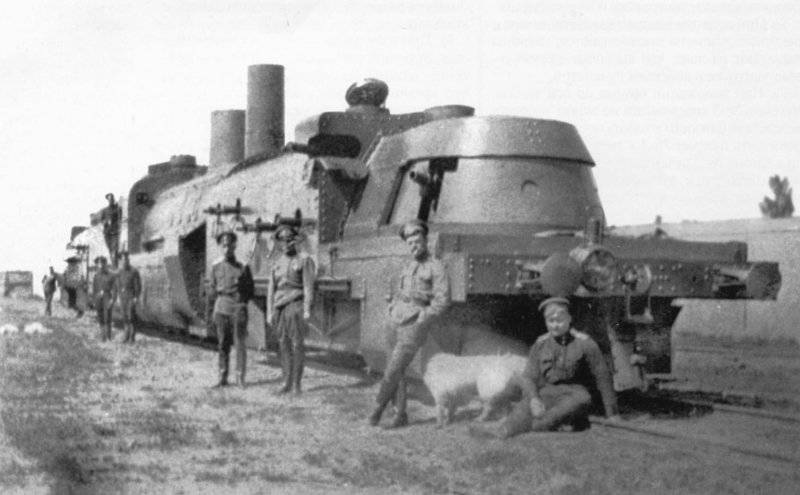
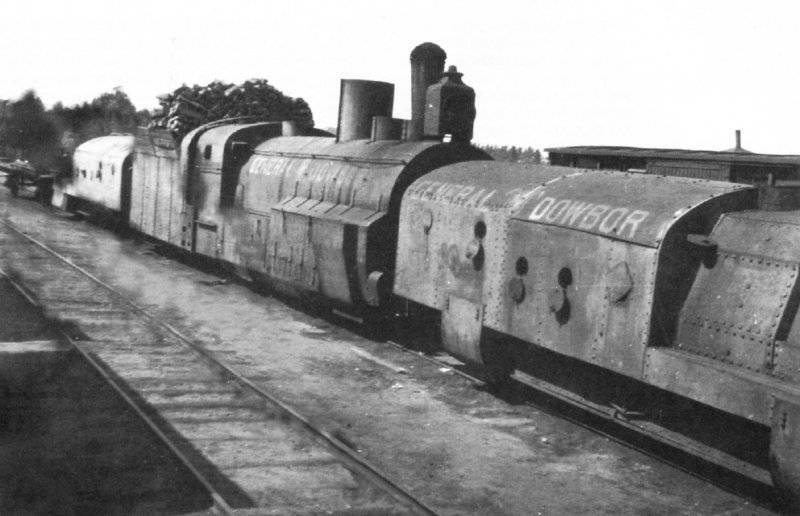
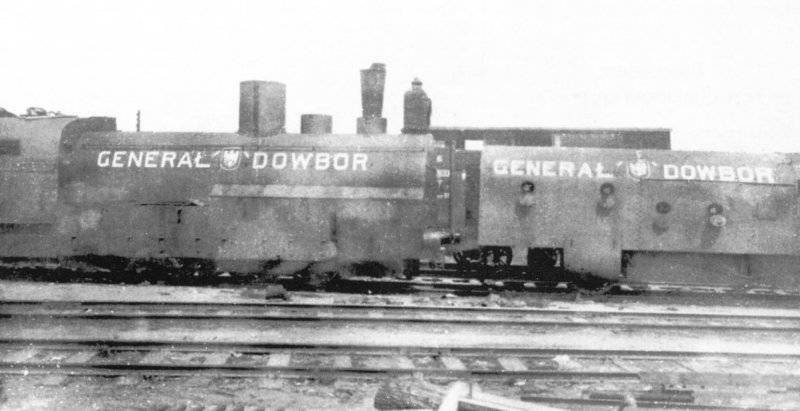
Information